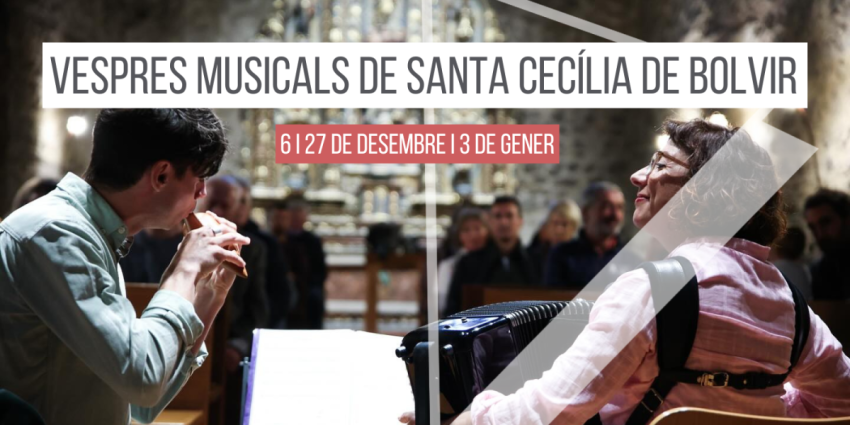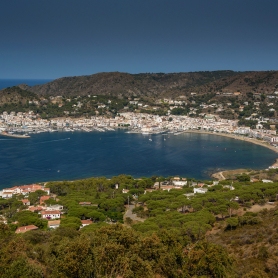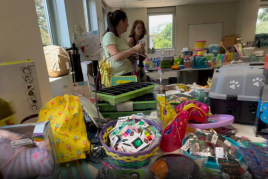A walk through Tossa de Mar

Tossa de Mar is a town on the Costa Brava that has traditionally been dedicated to maritime trade, fishing, the cork industry and, more recently, tourism.
Today we invite you to stroll through its streets and squares to discover what the city hides from us and also to see up close the natural and artistic beauty that it offers us in such a pleasant environment.
We will take the opportunity to take a tour of its history and the curiosities that Tossa de Mar hides and to discover what has happened that have led it to be the population that it is today.
To do this, we will start from inside the town to gradually go towards the coast and also towards the walled area of Tossa, where we will end up observing and enjoying the landscape, air and color that the sea offers us.
The Roman Villa of the Ametllers
 We will start with the oldest part that is preserved in Tossa and where we find the Roman villa of Ametllers, from the s. I BC to the s. V AD It is located on Avenida del Peregrino, 5-13. It is one of the most important towns in the old province of Tarraco. Dedicated especially to the cultivation of the vine and the export of wine for mass consumption.
We will start with the oldest part that is preserved in Tossa and where we find the Roman villa of Ametllers, from the s. I BC to the s. V AD It is located on Avenida del Peregrino, 5-13. It is one of the most important towns in the old province of Tarraco. Dedicated especially to the cultivation of the vine and the export of wine for mass consumption.
It consists of two well-differentiated areas: the urban country or noble zone of the complex, and the fruitful country or storage area and processing of agricultural products.
Its location on the eastern slope of the Can Magí hill, facing the sea and with a clear dominance over the bay, determined the distribution of the building.
The urban area or noble area of the complex, located on the upper level, attests to the magnitude of the town at all levels, especially in the s. II AD Elements such as the magnificent thermal complex, the mosaics, the stuccoes, the rare winter dining room, the nymphaeum (fountain) or the swimming pool with the imposing sculptural complex of Carrara marble that is conserved in the Municipal Museum, make us clear the exceptionality of the villa.
 The fruiting country, located on the lower level, was the industrial zone. The warehouses and processing rooms for agricultural products were located there. Wine, oil, salting were made and cereals were also kept.
The fruiting country, located on the lower level, was the industrial zone. The warehouses and processing rooms for agricultural products were located there. Wine, oil, salting were made and cereals were also kept.
The styles of bone and ivory, ceramics, coins or fibulae, which are also exhibited in the Municipal Museum, are a faithful testimony of the daily life of the town.
These types of villas perfectly combined the exploitation of the territory, which in the case of the town of the Ametllers encompassed a good part of the current municipality of Tossa, with the luxury and comforts of the owners. It is worth mentioning that most of the structures that are currently preserved are from the Augustan period, that is, from the end of the s. I BC the beginning of the s. I AD
House of Culture
Right in front of the Roman villa of Los Ametllers we find the House of Culture, located in the Old Hospital of San Miguel, which was founded in 1773 by the great man of the city Tomás Vidal Rey, considered a forerunner of the Indians. When he returned to Tossa, he dedicated a large part of his fortune to building a charity hospital for the city's poor.
 The building, of considerable dimensions, consists of a rectangular body with two floors arranged around a cloister. The chapel dedicated to San Miguel is located on one of the sides. It is worth highlighting the image of San Miguel on the main altar, of popular baroque style, the work of the local Casa Fuster workshop.
The building, of considerable dimensions, consists of a rectangular body with two floors arranged around a cloister. The chapel dedicated to San Miguel is located on one of the sides. It is worth highlighting the image of San Miguel on the main altar, of popular baroque style, the work of the local Casa Fuster workshop.
Now we are heading towards the maritime zone and we will do so passing through the town's churches.
Chapel and church
Arriving at the church square, we arrive at the Parish Church of San Vicente, in a neoclassical style that began to be built in 1755 and was completed in 1776.
 Despite being a simple building, the volume of the central nave stands out. It is originally decorated with altars and images in the popular Baroque style, many of them from the local Casa Fuster workshop, but the disappearance of this valuable heritage during the Civil War is to be lamented.
Despite being a simple building, the volume of the central nave stands out. It is originally decorated with altars and images in the popular Baroque style, many of them from the local Casa Fuster workshop, but the disappearance of this valuable heritage during the Civil War is to be lamented.
The interior painting has been recently restored and the church has regained some of its former beauty and brightness.
On Calle del Socorro we find the Chapel of the Virgen del Socorro, which was built in the s. XVI.
It is said that it was a votive offering from the sailor Antoni Caixa in gratitude to the Virgen del Socorro for having saved him from a shipwreck, who built it.
The current chapel underwent a remodeling in the s. XVIII which gave it its current appearance.
Can Ganga, home of the Women's Museum
 Near the Chapel of the Virgin of Socorro we find Can Ganga or Can Leandro, which is located in the neighborhood of sa Roqueta, which is the typical fishermen's neighborhood.
Near the Chapel of the Virgin of Socorro we find Can Ganga or Can Leandro, which is located in the neighborhood of sa Roqueta, which is the typical fishermen's neighborhood.
It is one of the first hamlets that were built outside the walls as a result of the population increase of the s. XVI and is also a worthy example of a fortified farmhouse. It was built like this because at the time of its construction it was isolated from the sea and was easy prey for pirates.
The building has a magnificent round portal, on top of which a machicolation shows protection against possible incursions by pirates from North Africa. Also noteworthy are the Gothic windows beautifully sculpted with angel sharks.
Now, yes, we head towards the walled enclosure, where we will finish the visit of the population.
Walled area of Vila Vella
Declared a National Historic-Artistic Monument in 1931, the walled area of Vila Vella is the emblem of the municipality. It is currently the only example of a fortified medieval town that still exists on the Catalan coast. Built at the beginning of the s. XIII, has undergone several restorations, the most important of which took place in the s. XIV.
 Almost the entire original perimeter area with crenellated walls is preserved. The wall lock distributes four towers and three cylindrical towers topped by machicolations. The best known towers are the Joanàs tower, which presides over the bay; the Torre de las Horas, located at the entrance to the parade ground , which owes its name to the fact that it was the only place where there was a public clock, and the Es Codolar tower, also known as the Torre del Homenaje, which presides over the beach of is Codolar.
Almost the entire original perimeter area with crenellated walls is preserved. The wall lock distributes four towers and three cylindrical towers topped by machicolations. The best known towers are the Joanàs tower, which presides over the bay; the Torre de las Horas, located at the entrance to the parade ground , which owes its name to the fact that it was the only place where there was a public clock, and the Es Codolar tower, also known as the Torre del Homenaje, which presides over the beach of is Codolar.
 The interior of the Old Villa is a charming space of narrow alleys with cobblestone pavement. You can still enjoy the charm of many beautifully storied Gothic windows. At the time of maximum splendor (15th century), Vila Vella comprised some eighty houses. From s. In the 16th century, the population began to expand outside the wall towards the neighborhood of sa Roqueta and following the entire edge of the royal road. It is worth highlighting the magnificent voussoir portal that leads to the Old Town through the parade ground.
The interior of the Old Villa is a charming space of narrow alleys with cobblestone pavement. You can still enjoy the charm of many beautifully storied Gothic windows. At the time of maximum splendor (15th century), Vila Vella comprised some eighty houses. From s. In the 16th century, the population began to expand outside the wall towards the neighborhood of sa Roqueta and following the entire edge of the royal road. It is worth highlighting the magnificent voussoir portal that leads to the Old Town through the parade ground.
Inside the Old Town, special mention must be made of the old church of San Vicente. This late Gothic church was built in the 12C. XV, on the previous Romanesque church, recently discovered and dated in the s. XI-XII. It has a single nave, a polygonal apse with three locks accompanied by a sacristy and a side chapel. Currently, only the apse and the sacristy retain the roof.
municipal Museum
 The Municipal Museum occupies the old house of the batlle de sac or governor, the noblest building in the walled enclosure. It was inaugurated on September 1, 1935.
The Municipal Museum occupies the old house of the batlle de sac or governor, the noblest building in the walled enclosure. It was inaugurated on September 1, 1935.
It contains an important collection of modern art, with works by national and foreign artists who frequented Tossa in the 1930s, but also works before and after this time. Noteworthy is the work El Violinista Celeste by Marc Chagall.
The archaeological section of the subsoil attests to the presence of man within our municipal term from the Paleolithic to the High Middle Ages. Of special interest is the mosaic in the atrium of the Roman Villa de los Ametllers, from the 4th or 5th century.
Tossa lighthouse, a century of maritime signals on the Costa Brava
 The Tossa Lighthouse (1917) is located at the top of Vila Vella and is currently the site of the exhibition A century of maritime signals on the Costa Brava.
The Tossa Lighthouse (1917) is located at the top of Vila Vella and is currently the site of the exhibition A century of maritime signals on the Costa Brava.
This equipment is a reference space for anyone interested in obtaining a concrete vision of the world of maritime signals on our coast.
The discourse brings us closer to history, technology and sociological elements linked to the world of lighthouses.
Tossa and the artists
In fact, it was at the beginning of the s. XX when Tossa began to acquire relevance as a residential and summer resort. This made artists of different styles stroll through its streets and beaches.
 In 1916 the Georgian painter Olga Sacharoff, her husband Otto Lloyd and the English painter Galwey arrived in Tossa de Mar. During the first half of the 1930s, specifically between 1932 and 1936, intellectuals and multidisciplinary artists of different origins arrived in Tossa , both Catalan and foreign artists made Tossa their point of confluence.
In 1916 the Georgian painter Olga Sacharoff, her husband Otto Lloyd and the English painter Galwey arrived in Tossa de Mar. During the first half of the 1930s, specifically between 1932 and 1936, intellectuals and multidisciplinary artists of different origins arrived in Tossa , both Catalan and foreign artists made Tossa their point of confluence.
There were writers, critics, philosophers, poets, architects, decorators and sculptors like Brignoni or Mm. Dem, painters like Metzinger, Schulein, Kars, Masson, Petersen, Chagall, Goldberg, Lévy, Janssen, Kamp, Mac-Nab, Zügel, Kaminagai, Gen Paul, Klein, Caillard and many others, art theorists and others. Catalan artists include sculptors Enric Casanovas and Enric Monjo, and painters Pedro Créixams, Rafael Benet, Emili Armengol, Manuel Humbert, Oleguer Junyent and Perrin.
This is how, in this fishing village, there was a confluence of avant -garde of great vitality, which had never been seen before. It was such an eclectic time that Rafael Benet described Tossa as "Babel of the Arts". There was no stylistic cohesion, the nucleus of artists who worked in Tossa with a single artistic style could not be identified, nor did they create a school. The artists of the "Babel de las Artes" were followers of Fauvism, Impressionism, Neo- Impressionism, Expressionism, simple lovers of the landscape and its possibilities. But all of them agreed on the fact of choosing Tossa to spend seasons.
The art critic and painter Rafael Benet points out among the reasons for the avant-garde phenomenon that occurred in Tossa: the potability of the currency, the European political malaise, the relative good price of life and the proximity of the French border. On the other hand, the Catalan painter Pere Créixams, who was one of the first artists to discover Tossa, and one of those who made it known and loved by many painters and intellectuals, also acted as a catalyst for the international artists they knew. of his time in Paris, coinciding with the effervescence of the avant-garde of Montmartre.
Ava Gardner in Tossa
 In 1950 is a date that will always be part of Tossa's collective memory. In the spring of that year, Tossa became the natural setting for the filming of a film with internationally famous actors: "Pandora and the Flying Dutchman" by Albert Lewin.
In 1950 is a date that will always be part of Tossa's collective memory. In the spring of that year, Tossa became the natural setting for the filming of a film with internationally famous actors: "Pandora and the Flying Dutchman" by Albert Lewin.
The arrival of Ava Gardner, James Mason, Mario Cabré and the entire film crew revolutionized the quiet life of the town. The film was released the following year, in 1951 and this gave Tossa a change of destiny.
Sixty years later, there is still much to tell. The good memory left by the film crew and the actors in the post-war Tossa is the common denominator of all the anecdotes.
But beyond what the filming of the film represented, we find an exceptional fact: Tossa's projection in the world as a result of the promotion of the film. This was a before and after for the city's economy and for its transformation into a tourist destination.
As a token of appreciation by the town of Tossa for the actress, in 1998 a statue of Ava Gardner, made in bronze and life-size by the artist Ció Abellí, was placed in a viewpoint inside the walled area of Vila Vella.
What to do
L'Espai Gastronomia
Tossa de MarEnjoy a place where laughter, festivity, and gastronomy unfold around a large…
Monestir de Sant Feliu de Guíxols
Sant Feliu de Guixols (a 10.3 Km)A thousand-year-old Benedictine monastery that combines spirituality, defense, and culture. Located in…
El Gran Museu de la Màgia
Santa Cristina d'Aro (a 12 Km)Come and discover the Casa Mágica, where automatons, posters, magic devices from…
Where to eat
L'Espai Gastronomia
Tossa de MarEnjoy a place where laughter, festivity, and gastronomy unfold around a large…
Pura Brasa
Pineda de Mar (a 21.9 Km)A unique gastronomic experience: Pura Brasa is a friendly and fun concept…
Where to sleep
Let's Holidays Tossa de Mar
Tossa de MarOur accommodations are located on the seafront, town center, historic center, Villa…
Càmping Cala Llevadó
Tossa de Mar (a 2 Km)The original and authentic sense of camping in the heart of nature:…
Hotel Cleopatra Spa
Lloret de Mar (a 7.3 Km)The Hotel Cleopatra Spa is a 4 star hotel, inspired by the…

















